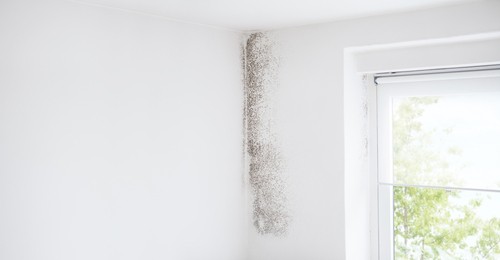
Identifying Mold: Signs to Look for in Your Home. Mold, a common issue in many homes, often remains unnoticed until it becomes a serious problem.
It’s crucial to understand what mold is, why it grows in homes, and how it can impact your living space and health.
By being aware of the signs and conditions that lead to mold growth, homeowners can take proactive steps to prevent its spread and ensure a healthier environment.
Basic Understanding of Mold
What is Mold, and Why Does It Grow in Homes?
Mold is a fungus that reproduces through spores and thrives in moist environments.
In homes, mold growth is usually a result of excess moisture, which can arise from various sources, such as leaking pipes, condensation, flooding, or high humidity.
These conditions provide the perfect breeding ground for mold spores to settle and grow.
Types of Common Household Molds
Several types of mold are commonly found in homes, each with unique characteristics:
- Aspergillus: This mold is often found on walls and in HVAC systems. It can appear in various colors and can cause respiratory infections and allergic reactions.
- Cladosporium: Typically seen on fabrics, wood, and other porous materials, this mold can be black, green, or brown and can cause breathing problems and skin rashes.
- Stachybotrys: Commonly known as “black mold,” it is usually found in water-damaged materials and can produce toxins that may lead to serious health issues, including breathing difficulties and allergic symptoms.
Conditions that Favor Mold Growth
Mold growth is most common in areas with persistent moisture, poor ventilation, and inadequate light. Common contributing factors include:
- High humidity levels are often found in bathrooms, kitchens, and laundry rooms.
- Insufficient ventilation can lead to damp conditions.
- Water leaks from pipes, roofs, or windows, creating a constant moisture source.
- Accumulation of condensation, particularly on windows and in basements.
Visual Identification of Mold
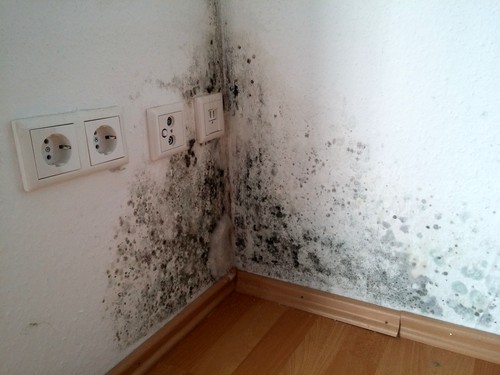
Mold can vary in appearance, but it typically presents as irregularly shaped spots or patches. Colors can range from black, green, white, or even red.
The texture of mold can be fuzzy, slimy, or even powdery. In some cases, mold growth can be hidden behind wallpaper, tiles, or paneling, making it difficult to detect until it’s extensive.
Common Areas Prone to Mold Growth
Mold commonly occurs in areas that are prone to moisture:
- Bathrooms: Due to the high humidity from showers and baths.
- Kitchens: Especially under sinks and around appliances that use or generate water.
- Basements and attics: Where poor ventilation and leaks can create ideal conditions for mold.
- Around windows: Where condensation often accumulates.
Sensory Signs of Mold
One of the first indications of mold can be its distinctive smell. Mold emits a musty, earthy odor, particularly noticeable in closed-off areas like basements or closets.
If you notice this type of smell, it’s a strong sign that you should investigate further for visible signs of mold.
Health Symptoms That May Indicate Mold Presence

Exposure to mold can lead to various health issues, particularly for those with allergies or asthma. Common symptoms include:
- Allergic reactions, such as sneezing, runny nose, red eyes, and skin rash.
- Asthma attacks in individuals with asthma who are allergic to mold.
- Respiratory issues, including coughing and wheezing.
- In severe cases, exposure to toxic molds like black mold can lead to more serious health problems.
Preventive Measures
Controlling Humidity and Ventilation in Your Home
To prevent mold growth, it’s essential to control the humidity levels and ventilation in your home. This can be achieved by:
- Using dehumidifiers in damp areas.
- Ensuring that bathrooms and kitchens are well-ventilated.
- Fixing leaks promptly to avoid moisture accumulation.
- Using exhaust fans to reduce moisture.
Regular Cleaning and Maintenance Tips
Regular cleaning and maintenance can help prevent mold growth:
- Clean and dry any water spills immediately.
- Regularly inspect and clean HVAC systems.
- Keep gutters and drains clear to prevent water accumulation.
- Inspect roofs and windows for leaks and repair them promptly.
Dealing with Mold
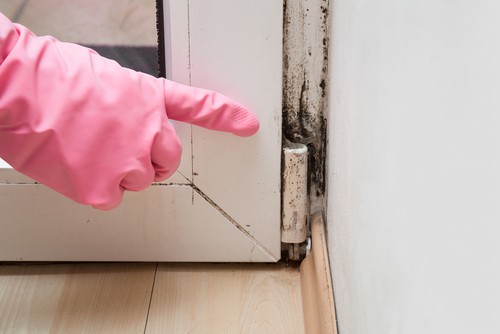
Initial Steps When You Suspect Mold
If you suspect mold in your home, the first step is to assess the extent of the problem. For small areas, it may be possible to handle the mold yourself.
However, it’s advisable to consult a professional for larger infestations or if the mold is in HVAC systems or other complex areas.
DIY Mold Removal Techniques
For small-scale mold problems, you can clean the area with water and detergent. It’s essential to wear protective gear, such as gloves and a mask, to avoid inhaling spores.
After cleaning, the area should be dried thoroughly to prevent the mold from returning.
When to Call a Professional
In cases where the mold covers a large area, or if you’re unsure about the type of mold or how to remove it safely, it’s best to call a professional.
Mold remediation experts can safely and effectively remove the mold and advise on ways to prevent its return.
Long-Term Solutions
To prevent mold growth in the long term, consider making improvements to your home’s infrastructure:
- Improve ventilation in areas prone to moisture.
- Use mold-resistant materials in high-humidity areas.
- Ensure that your home’s foundation is properly sealed and waterproofed.
- Regularly inspect your home for signs of mold and address any issues promptly.
Understanding Health Impacts
While mold is a common problem in many homes, it’s important not to underestimate its potential impact on health.
Prolonged mold exposure can lead to respiratory issues, allergic reactions, and, in some cases, more severe health problems.
Individuals with existing respiratory conditions or weakened immune systems must avoid mold exposure.
FAQ About Molds
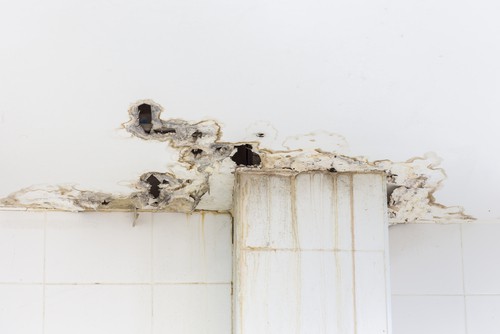
How can I tell the difference between mold and mildew?
Mold and mildew have some similarities, but there are key differences. Mildew is typically white or gray and appears powdery or fluffy.
It’s often found on surfaces like paper, fabric, or walls. Conversely, mold is usually darker (black, green, or red) and appears slimy or fuzzy. It’s often found in more permanent structures like walls or floors.
What are some early signs of mold growth in homes?
Early signs of mold include a musty smell, visible water damage, or condensation, particularly in areas with poor ventilation. You may also notice health symptoms such as sneezing, coughing, or skin irritation.
Can mold grow inside walls, and how can it be detected?
Mold can indeed grow inside walls, often due to water leaks or high humidity. It may be detected by a musty odor, visible mold growth at the base of walls, or by peeling or discolored wallpaper or paint.
Are there any natural remedies to prevent mold?
Natural remedies for preventing mold include using white vinegar, which can kill most types of mold, and ensuring good air circulation and sunlight in your home. Tea tree oil is also effective against mold and can be a natural fungicide.
How often should I inspect my home for signs of mold?
Regularly inspecting your home for signs of mold is advisable. Pay special attention to moisture-prone areas like bathrooms, kitchens, and basements.
Identifying Mold: Signs to Look for in Your Home – Conclusion
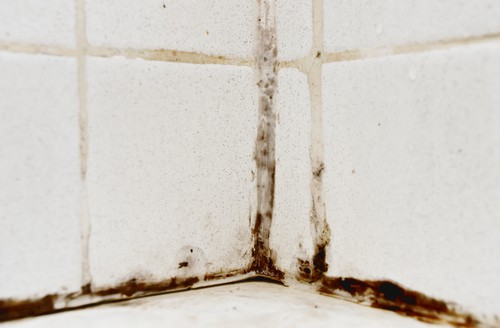
Maintaining a mold-free home requires vigilance and regular maintenance.
By understanding the conditions that lead to mold growth and taking proactive measures to prevent it, you can ensure a healthier living environment.
Regular cleaning, controlling humidity, and fixing leaks promptly are key strategies in this ongoing battle against mold in your home.
Are you seeking professional and reliable house cleaning services in Singapore? Contact us today!
